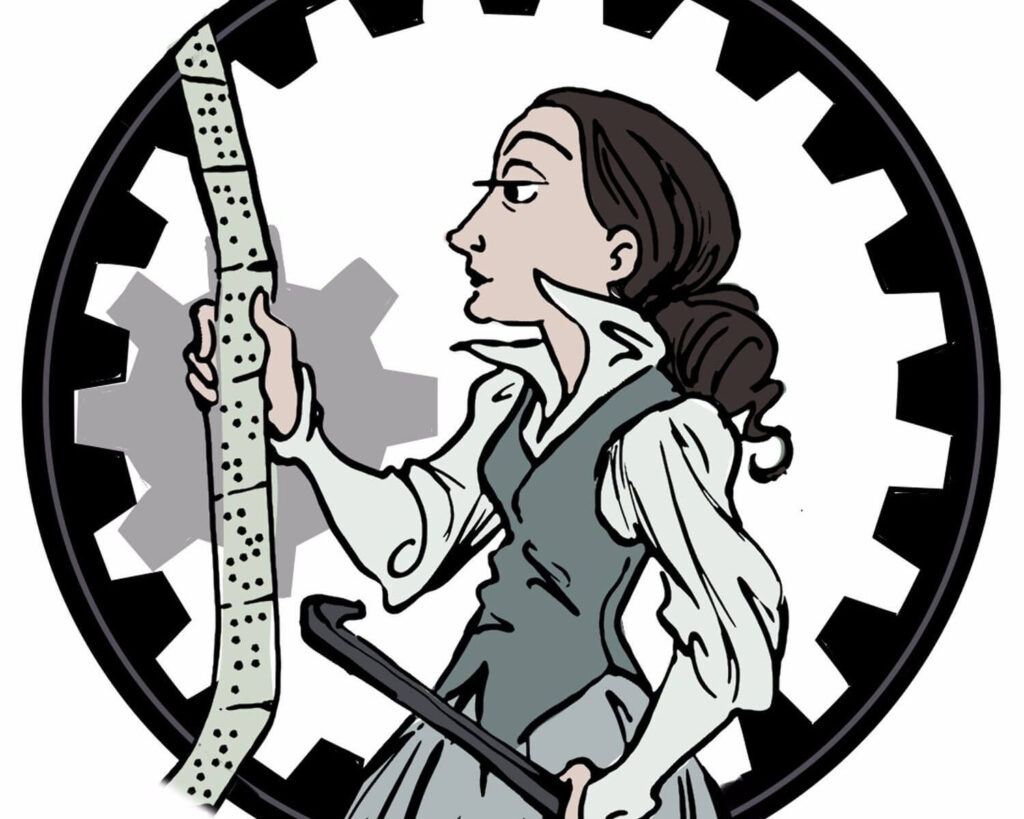This is a cleaned up version of the Ada Lovelace story,
A pioneer in the field of computing, she has a remarkable life story as noted in this October 13, 2014 posting, and explored further in this October 13, 2015 posting (Ada Lovelace “… manipulative, aggressive, a drug addict …” and a genius but was she likable?) published to honour the 200th anniversary of her birth.
In a December 8, 2022 essay for The Conversation, Corinna Schlombs focuses on skills other than mathematics that influenced her thinking about computers (Note: Links have been removed),
…
Growing up in a privileged aristocratic family, Lovelace was educated by home tutors, as was common for girls like her. She received lessons in French and Italian, music and in suitable handicrafts such as embroidery. Less common for a girl in her time, she also studied math. Lovelace continued to work with math tutors into her adult life, and she eventually corresponded with mathematician and logician Augustus De Morgan at London University about symbolic logic.
Lovelace drew on all of these lessons when she wrote her computer program – in reality, it was a set of instructions for a mechanical calculator that had been built only in parts.
The computer in question was the Analytical Engine designed by mathematician, philosopher and inventor Charles Babbage. Lovelace had met Babbage when she was introduced to London society. The two related to each other over their shared love for mathematics and fascination for mechanical calculation. By the early 1840s, Babbage had won and lost government funding for a mathematical calculator, fallen out with the skilled craftsman building the precision parts for his machine, and was close to giving up on his project. At this point, Lovelace stepped in as an advocate.
To make Babbage’s calculator known to a British audience, Lovelace proposed to translate into English an article that described the Analytical Engine. The article was written in French by the Italian mathematician Luigi Menabrea and published in a Swiss journal. Scholars believe that Babbage encouraged her to add notes of her own.
In her notes, which ended up twice as long as the original article, Lovelace drew on different areas of her education. Lovelace began by describing how to code instructions onto cards with punched holes, like those used for the Jacquard weaving loom, a device patented in 1804 that used punch cards to automate weaving patterns in fabric.
Having learned embroidery herself, Lovelace was familiar with the repetitive patterns used for handicrafts. Similarly repetitive steps were needed for mathematical calculations. To avoid duplicating cards for repetitive steps, Lovelace used loops, nested loops and conditional testing in her program instructions.
…
Finally, Lovelace recognized that the numbers manipulated by the Analytical Engine could be seen as other types of symbols, such as musical notes. An accomplished singer and pianist, Lovelace was familiar with musical notation symbols representing aspects of musical performance such as pitch and duration, and she had manipulated logical symbols in her correspondence with De Morgan. It was not a large step for her to realize that the Analytical Engine could process symbols — not just crunch numbers — and even compose music.
…
… Lovelace applied knowledge from what we today think of as disparate fields in the sciences, arts and the humanities. A well-rounded thinker, she created solutions that were well ahead of her time.
If you have time, do check out Schlombs’ essay (h/t December 9, 2022 news item on phys.org).
For more about Jacquard looms and computing, there’s Sarah Laskow’s September 16, 2014 article for The Atlantic, which includes some interesting details (Note: Links have been removed),
…, one of the very first machines that could run something like what we now call a “program” was used to make fabric. This machine—a loom—could process so much information that the fabric it produced could display pictures detailed enough that they might be mistaken for engravings.
Like, for instance, the image above [as of March 3, 2023, the image is not there]: a woven piece of fabric that depicts Joseph-Marie Jacquard, the inventor of the weaving technology that made its creation possible. As James Essinger recounts in Jacquard’s Web, in the early 1840s Charles Babbage kept a copy at home and would ask guests to guess how it was made. They were usually wrong.
.. At its simplest, weaving means taking a series of parallel strings (the warp) lifting a selection of them up, and running another string (the weft) between the two layers, creating a crosshatch. …
The Jacquard loom, though, could process information about which of those strings should be lifted up and in what order. That information was stored in punch cards—often 2,000 or more strung together. The holes in the punch cards would let through only a selection of the rods that lifted the warp strings. In other words, the machine could replace the role of a person manually selecting which strings would appear on top. Once the punch cards were created, Jacquard looms could quickly make pictures with subtle curves and details that earlier would have take months to complete. …
… As Ada Lovelace wrote him: “We may say most aptly that the Analytical Engine weaves algebraical patterns just as the Jacquard-loom weaves flowers and leaves.”
For anyone who’s very curious about Jacquard looms, there’s a June 25, 2019 Objects and Stories article (Programming patterns: the story of the Jacquard loom) on the UK’s Science and Industry Museum (in Manchester) website.
